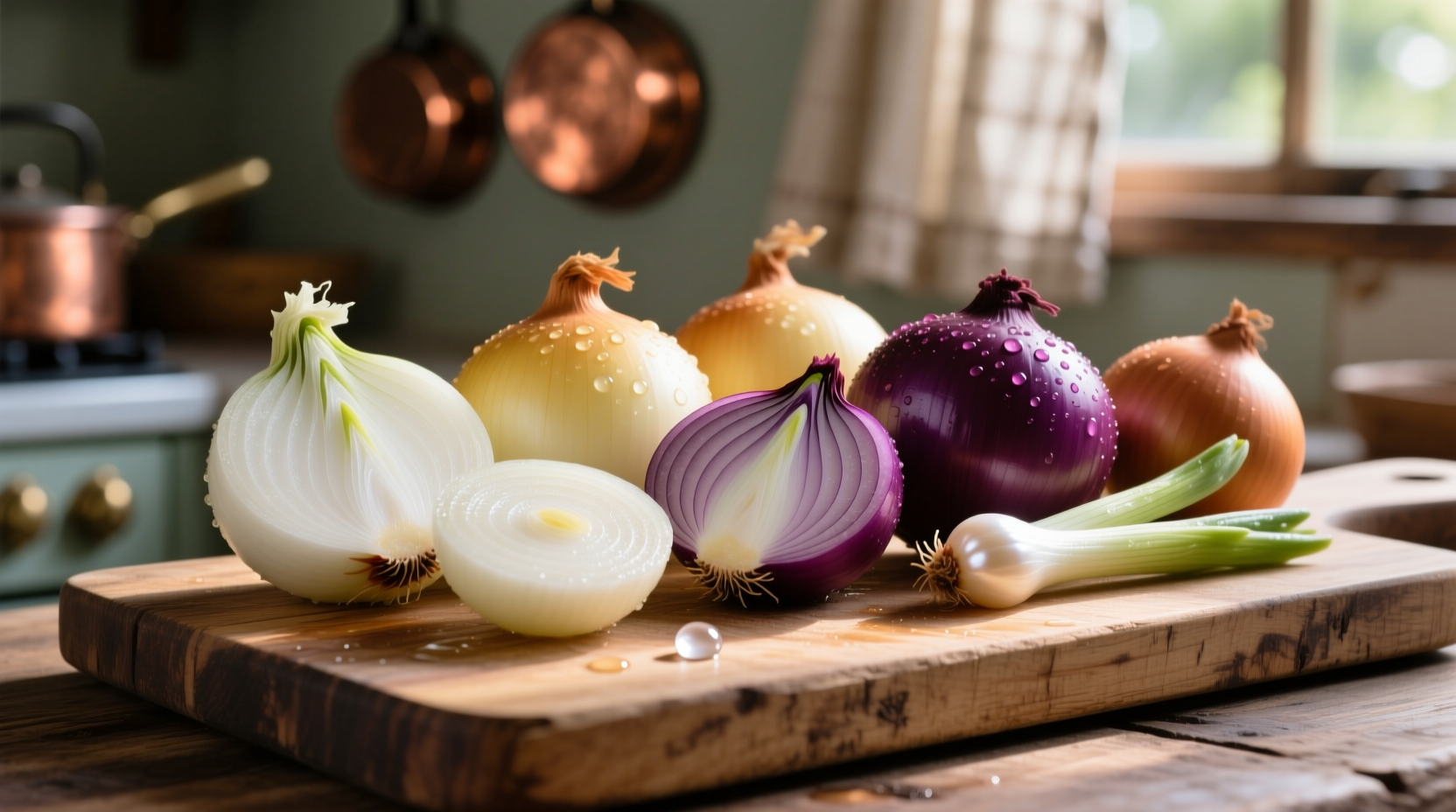Discover exactly which sweet onion varieties work best for your cooking needs and why they taste different from regular onions. This guide cuts through the confusion with science-backed comparisons, practical usage tips, and clear growing information—so you'll never grab the wrong onion again.
What Actually Makes an Onion Sweet?
Sweetness in onions comes from two key factors: lower sulfur compounds and higher sugar content. Regular yellow onions contain about 3-4% sugar and higher levels of sulfur compounds that create that sharp, pungent bite. Sweet varieties typically contain 5-7% sugar with significantly reduced sulfur compounds.
The specific growing conditions dramatically impact sweetness. Onions grown in low-sulfur soil (like the sandy fields of Vidalia, Georgia) naturally develop sweeter flavors. Temperature also matters—cool growing seasons enhance sweetness while hot conditions increase pungency.
Sweet Onion Varieties Compared: Which One Should You Use?
| Variety | Peak Season | Sweetness Level | Best Uses | Storage Life |
|---|---|---|---|---|
| Vidalia | April-June | ★★★★★ | Raw applications, sandwiches, salads | 2-3 weeks refrigerated |
| Walla Walla | June-August | ★★★★☆ | Grilled, caramelized, raw in salsas | 3-4 weeks refrigerated |
| Maui | Year-round (peak spring) | ★★★★☆ | Raw in poke bowls, ceviche, salads | 2-3 weeks refrigerated |
| Texas Sweet | May-July | ★★★☆☆ | Caramelizing, roasting, raw in burgers | 3-4 weeks refrigerated |
| Red Torpedo | July-September | ★★★☆☆ | Salads, sandwiches, pickling | 4-6 weeks refrigerated |
Source: USDA Agricultural Research Service (https://www.ars.usda.gov/oc/np/) and University of Georgia Extension (https://extension.uga.edu/)
When to Choose Each Sweet Onion Variety
Understanding the subtle differences between sweet onion varieties helps you select the perfect one for your dish:
For Raw Applications: Vidalia and Maui
Vidalia onions reign supreme when served raw. Their exceptionally low pyruvate levels (0.10-0.15 mg/g) mean minimal eye irritation and maximum sweetness. Maui onions offer similar mildness with a slightly crisp texture ideal for Hawaiian poke bowls and fresh salsas.
Pro tip: Chill Vidalias for 30 minutes before slicing to maintain their crisp texture in salads and sandwiches.
For Cooking: Walla Walla and Texas Sweet
Walla Walla's higher water content (90% vs. 85% in regular onions) makes them exceptional for caramelizing—they develop deep, complex flavors without burning. Texas Sweet varieties maintain their structure better during roasting, making them ideal for oven dishes.
Important limitation: Sweet onions contain more water than storage onions, so they take 25-30% longer to caramelize properly. Patience pays off with richer flavor development.
For Extended Storage: Red Torpedo
While most sweet onions have shorter shelf lives, Red Torpedo offers the best storage potential among sweet varieties. Its thicker skin helps it last up to six weeks when properly stored, making it the sweet onion variety most practical for meal prepping.

Growing Sweet Onions: Key Considerations
If you're gardening, sweet onions require specific conditions to develop their characteristic flavor:
- Soil requirements: Low-sulfur, sandy soil is essential—this is why Vidalias only come from specific Georgia counties
- Day length: Most sweet varieties are long-day onions requiring 14+ hours of daylight
- Water needs: Consistent moisture (1-2 inches weekly) prevents bolting and maintains sweetness
- Harvest timing: Pull when tops fall over naturally for maximum sugar development
Home gardeners should know that "sweet" is not just a variety characteristic—it's heavily influenced by growing conditions. Even standard yellow onion varieties can develop sweeter flavors when grown in low-sulfur soil with consistent watering.
Maximizing Sweetness: Storage and Preparation Tips
Sweet onions require different handling than storage onions to maintain their delicate flavor:
- Refrigerate immediately: Store in the crisper drawer in a mesh bag (never plastic)
- Use quickly: Consume within 2-3 weeks for peak flavor (except Red Torpedo)
- Cutting technique: Slice across the grain to minimize cell damage and preserve texture
- Prevent browning: Toss with lemon juice or vinegar immediately after cutting
When cooking sweet onions, resist the urge to add salt too early—it draws out moisture and prevents proper caramelization. Wait until the onions have softened before seasoning.
Common Questions About Sweet Onion Varieties
Here are answers to the most frequently asked questions about sweet onions:











 浙公网安备
33010002000092号
浙公网安备
33010002000092号 浙B2-20120091-4
浙B2-20120091-4